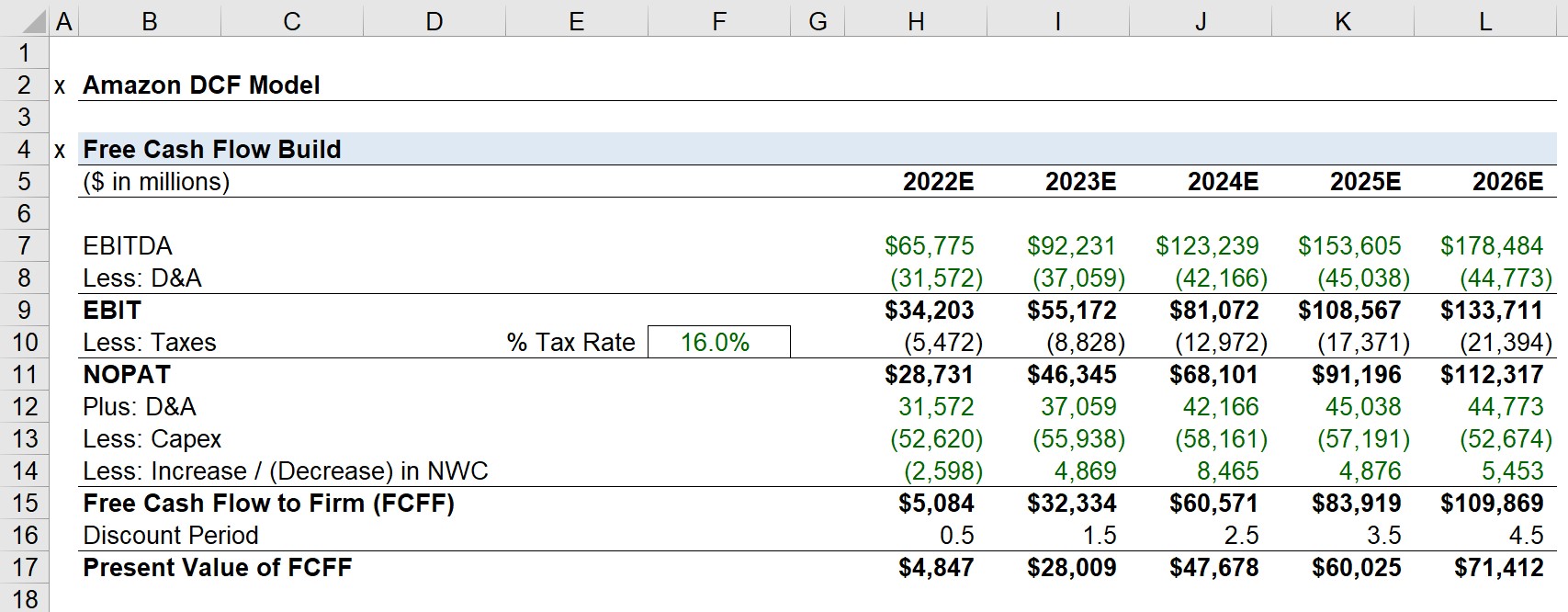

Finance
What Is Capital Structure Leverage
Published: December 24, 2023
Learn about capital structure leverage in finance and how it can impact a company's financial stability and profitability. Gain insights on the importance of finding the right balance for long-term success.
(Many of the links in this article redirect to a specific reviewed product. Your purchase of these products through affiliate links helps to generate commission for LiveWell, at no extra cost. Learn more)
Table of Contents
- Introduction
- Definition of Capital Structure
- Importance of Capital Structure
- Types of Capital Structure Leverage
- Debt Leverage
- Equity Leverage
- Operating Leverage
- Factors Affecting Capital Structure Leverage
- Benefits of Capital Structure Leverage
- Risks of Capital Structure Leverage
- Examples of Capital Structure Leverage in Practice
- Conclusion
Introduction
When it comes to managing the financial health and stability of a company, one of the most crucial aspects to consider is its capital structure leverage. Capital structure leverage refers to the mix of debt and equity financing used by a company to fund its operations and investments. It plays a crucial role in determining the financial risk and attractiveness of a business.
In simpler terms, capital structure leverage is the way in which a company chooses to finance its activities, either by relying more on debt or equity. Debt financing involves borrowing money from external sources, such as banks or issuing bonds, while equity financing involves raising funds through the sale of company shares to investors. The proportion of debt and equity in a company’s capital structure can have a significant impact on its long-term financial stability and profitability.
Having an optimal capital structure leverage is essential for a company to achieve its financial goals and maximize shareholder value. By carefully managing the balance between debt and equity, a company can lower its cost of capital, enhance its ability to generate profits, and maintain financial flexibility.
The decision on capital structure leverage is influenced by various factors, such as the company’s industry, growth prospects, profitability, and risk tolerance. For example, more debt leverage may be suitable for companies in stable industries with steady cash flows, while equity leverage may be preferred by high-growth startups that need additional capital to fuel their expansion.
In the following sections, we will delve deeper into the different types of capital structure leverage, the factors influencing its choice, and the benefits and risks involved. Understanding these concepts will equip businesses and investors with the knowledge to make informed decisions regarding capital structure leverage for long-term success.
Definition of Capital Structure
Capital structure refers to the way a company finances its operations and investments through a combination of debt and equity. It represents the proportion of debt and equity in a company’s overall financing mix and plays a critical role in determining the financial stability and risk profile of a business.
Debt financing involves borrowing money from external sources such as banks, financial institutions, or issuing bonds. This borrowed money is to be repaid over a specified period with interest. On the other hand, equity financing involves raising funds by selling shares of the company to investors, who become partial owners and shareholders.
The capital structure of a company can be either leveraged or unleveraged. Leveraged capital structure implies that the company relies more heavily on debt financing, while unleveraged capital structure indicates a higher proportion of equity financing.
The decision of the capital structure is crucial as it has significant implications for a company’s financial health. A well-balanced capital structure enables a company to optimize its cost of capital, enhance its financial flexibility, and allocate resources efficiently. It also affects the risk and profitability of the business.
The capital structure is often represented as the debt-to-equity ratio, which measures the proportion of debt to equity in a company’s total capital. A higher debt-to-equity ratio indicates a higher level of debt financing and a higher financial risk, while a lower ratio signifies a more conservative approach.
It is crucial for businesses to carefully analyze their capital structure options and determine the optimal mix of debt and equity based on their specific circumstances. Factors such as industry dynamics, growth prospects, cash flow stability, and risk tolerance play a significant role in shaping the capital structure decisions of a company.
In the next sections, we will explore the importance of capital structure and its different types of leverage, providing a comprehensive understanding of how companies finance their operations and investments.
Importance of Capital Structure
The capital structure of a company plays a crucial role in shaping its financial health and stability. It has significant implications for the risk, profitability, and sustainability of a business. Here are some key reasons why capital structure is important:
- Cost of Capital: The capital structure of a company directly impacts its cost of capital. By striking the right balance between debt and equity, a company can minimize its overall cost of capital, which is the average cost of borrowing funds.
- Financial Risk: The capital structure determines the level of financial risk a company undertakes. A higher proportion of debt in the capital structure increases the financial risk, as the company needs to meet interest payments and repay principal amounts. On the other hand, a higher proportion of equity reduces the financial risk but may dilute ownership and control.
- Flexibility: The capital structure influences a company’s financial flexibility. A well-structured capital mix provides flexibility in raising funds for future investments or expansion plans. Companies with a diverse range of financing options are better equipped to adapt to changing market conditions and capitalize on growth opportunities.
- Investor Perception: The capital structure of a company can impact how investors perceive its financial stability and growth potential. A balanced capital structure indicates prudent financial management and instills confidence in investors, making it easier to attract capital and drive company growth.
- Tax Implications: The capital structure has implications for tax planning. Interest payments on debt are typically tax-deductible, which can reduce a company’s tax liability. On the other hand, equity financing does not offer the same tax benefits.
- Operational Efficiency: An optimal capital structure allows companies to allocate resources efficiently and focus on their core operations. By managing the balance between debt and equity, companies can enhance operational efficiency and maximize profitability.
It is important for businesses to evaluate their capital structure regularly and make adjustments when necessary. Changing market conditions, industry dynamics, and the company’s growth stage may warrant a reassessment of the capital structure. By maintaining a well-balanced capital structure, companies can enhance their financial stability, attract investors, and position themselves for long-term success.
Types of Capital Structure Leverage
Capital structure leverage can be categorized into three main types: debt leverage, equity leverage, and operating leverage. Each type represents a different approach to financing and has distinct implications for a company’s financial profile. Let’s explore each type in detail:
- Debt Leverage: Debt leverage refers to the use of debt financing to raise capital. Companies that employ debt leverage rely on borrowing funds from external sources, such as banks, financial institutions, or by issuing bonds. Debt leverage allows companies to access additional capital without diluting ownership or control. Moreover, the interest payments on debt are often tax-deductible, reducing the overall cost of capital. However, excessive reliance on debt can increase financial risk, especially if the company faces difficulties in making interest and principal payments.
- Equity Leverage: Equity leverage involves raising capital by selling shares of the company to investors. This type of leverage allows companies to access funds without incurring debt. Equity leverage provides greater flexibility, as there are no fixed interest payments or repayment obligations. It also allows the company to share the financial risk with shareholders. However, equity financing may dilute ownership and control, as new shareholders become stakeholders in the company. Moreover, there are no tax benefits associated with equity financing.
- Operating Leverage: Operating leverage refers to the use of fixed costs in a company’s operations. This type of leverage is not directly related to debt or equity financing but focuses on optimizing the cost structure of the business. By implementing efficient operational strategies and reducing variable costs, companies can achieve higher profit margins and improve financial performance. However, operating leverage also increases the risk of losses if revenue decreases, as fixed costs still need to be met.
Companies often employ a combination of these leverage types in their capital structure to optimize their financing mix. The specific choice of leverage depends on factors such as the company’s industry, growth prospects, financial goals, and risk tolerance. Each type of leverage comes with its own advantages and disadvantages, and finding the right balance is crucial for long-term financial stability and success.
Debt Leverage
Debt leverage is a type of capital structure leverage that involves relying on debt financing to raise capital for a company. In this approach, the company borrows funds from external sources, such as banks, financial institutions, or through the issuance of bonds. The borrowed funds need to be repaid over a specified period, typically with interest.
Debt leverage offers several advantages to companies. Firstly, borrowing funds allows companies to access additional capital without diluting ownership or control. This is particularly beneficial for companies that want to raise capital without giving up ownership stakes or attracting additional shareholders. It allows companies to retain more control over their operations and strategic decisions.
Secondly, debt financing often provides tax benefits. The interest payments on debt are typically tax-deductible, which reduces a company’s tax liability. This can result in lower overall costs of capital and increase profitability. The tax advantages of debt leverage make it an attractive option for many businesses, helping them optimize their financial resources and maximize returns.
However, debt leverage also comes with certain risks. One of the main risks is the increased financial obligations. Borrowing money means that a company has to make regular interest payments and repay the principal amount within the agreed timeline. Failure to meet these repayment obligations can lead to severe consequences, including default, bankruptcy, and damage to the company’s reputation.
Another risk of debt leverage is the cost of borrowing. Companies need to consider the interest rates and fees associated with debt financing. Higher interest rates or unfavorable lending terms can significantly impact the cost of capital and the financial health of the business.
Moreover, excessive reliance on debt can increase financial risk, especially during economic downturns or in industries with volatile cash flows. Companies with high debt levels may struggle to meet their debt obligations if they experience a decline in revenue or face unexpected challenges.
Despite the risks, debt leverage can be a valuable tool for companies looking to raise capital and optimize their capital structure. It allows companies to access funds for growth, expansion, and investment opportunities without diluting ownership. However, it is crucial for companies to carefully manage their debt levels and ensure they have the ability to meet their repayment obligations.
Equity Leverage
Equity leverage is a type of capital structure leverage that involves raising capital by selling shares of a company to investors. Unlike debt leverage, which relies on borrowing funds, equity leverage allows companies to access capital without incurring debt.
Equity leverage offers several advantages to companies. One of the main benefits is that it provides greater flexibility compared to debt financing. By issuing equity, companies can raise funds without the obligation of making fixed interest payments or repaying the principal amount. This flexibility allows companies to allocate their financial resources towards growth initiatives, research and development, or other strategic investments.
Furthermore, equity leverage allows companies to share the financial risk with shareholders. Investors who purchase shares become partial owners of the company and therefore, share in both the potential profits and losses. This shared risk can provide a level of stability and reduce the financial burden on the company.
In addition, equity financing often introduces fresh perspectives and expertise to a company. Investors who buy shares become stakeholders in the business and have a vested interest in its success. They may bring valuable insights, industry connections, and guidance that can contribute to the growth and development of the company.
However, equity leverage also has some drawbacks. One significant disadvantage is the dilution of ownership and control. By issuing additional shares, existing shareholders’ ownership percentage decreases, potentially reducing the control they have over strategic decisions and day-to-day operations. This can be a concern for companies that want to retain a high degree of control over their operations.
Another aspect to consider is that equity financing does not offer the same tax advantages as debt financing. Unlike interest payments on debt, which are usually tax-deductible, the issuance of equity does not provide immediate tax benefits. This can impact the overall cost of capital and the financial viability of the company.
Despite the potential drawbacks, equity leverage can be an attractive option for companies, particularly those seeking capital without the pressure of debt repayment. It allows businesses to access funds, benefit from shared risk, and tap into the expertise of investors. By carefully balancing equity and debt financing, companies can optimize their capital structure and unlock growth opportunities.
Operating Leverage
Operating leverage is a type of capital structure leverage that focuses on optimizing a company’s cost structure and operational efficiency. It involves the use of fixed costs in a company’s operations, which can have a significant impact on its profitability and financial performance.
Fixed costs represent expenses that do not vary based on the level of production or sales volume. These costs include items such as rent, salaries, insurance, and depreciation. By utilizing fixed costs effectively, companies can achieve economies of scale and improve their profit margins.
Operating leverage works on the principle that as sales volume increases, the fixed costs are spread over a larger revenue base, leading to higher profitability. This happens because the proportion of fixed costs to total costs decreases, resulting in a higher contribution margin.
However, operating leverage also introduces a level of risk. If sales volume decreases, the fixed costs remain unchanged, which can lead to lower profit margins or even losses. Companies with high operating leverage are more sensitive to changes in sales, making them vulnerable to market downturns.
Investing in technologies and processes that increase productivity and efficiency is one way to leverage operating leverage. By implementing streamlined operations, automation, and lean processes, companies can reduce their variable costs and optimize their cost structure.
Another strategy is to focus on economies of scale. Companies that can achieve higher production volumes can spread their fixed costs over a larger number of units, resulting in lower average costs. This helps companies remain competitive and improve their profitability.
It’s important to note that operating leverage is not directly related to debt or equity financing. It focuses on the operational aspects of a company’s capital structure. However, it is closely linked to overall financial performance and can have a significant impact on a company’s ability to sustain profitability and generate cash flow.
Overall, operating leverage offers companies the opportunity to optimize their cost structure and improve profitability. By effectively managing fixed costs and implementing efficient operational strategies, companies can enhance their competitiveness and financial stability.
Factors Affecting Capital Structure Leverage
Several factors influence a company’s choice and determination of its capital structure leverage. These factors are important to consider as they shape the financial risk, cost of capital, and long-term sustainability of the business. Let’s explore some key factors that influence capital structure leverage:
- Industry and Business Risk: Different industries have varying risk profiles, and this can impact the preferred capital structure. For example, industries with stable cash flows and low business risk may be more inclined to use debt leverage to take advantage of tax benefits and lower their cost of capital.
- Growth Prospects: Companies with high growth prospects may opt for equity leverage to raise funds for expansion. Startups and high-tech companies often rely on equity financing to fuel their rapid growth since they may not have sufficient cash flow or assets to support debt repayments.
- Company Size and Life Cycle Stage: The size and life cycle stage of a company can influence its capital structure decisions. Established companies with stable operations and cash flows may have a more balanced mix of debt and equity, while smaller or early-stage companies may rely more on equity financing to mitigate financial risk.
- Profitability and Cash Flow Stability: Profitability and cash flow stability directly impact a company’s ability to service debt. Companies with steady cash flows and high-profit margins may feel more comfortable taking on debt leverage, as they have the ability to meet interest payments and debt obligations.
- Asset Tangibility: The tangibility of a company’s assets can affect the ability to secure debt financing. Companies with tangible assets, such as real estate or machinery, may find it easier to obtain debt financing since the assets can serve as collateral.
- Market Conditions: The prevailing market conditions, such as interest rates, investor sentiment, and availability of financing options, can influence the choice of capital structure leverage. For example, during periods of low-interest rates, companies may be more inclined to take on debt to take advantage of favorable borrowing conditions.
- Tax Considerations: Tax implications play a role in determining capital structure decisions. Debt financing offers tax advantages due to the deductibility of interest payments, while equity financing does not offer immediate tax benefits. Companies must evaluate the potential tax implications and consider their overall cost of capital.
It is important for companies to carefully analyze these factors and assess their specific circumstances before determining their capital structure leverage. While there is no one-size-fits-all approach, understanding these factors can help companies make informed decisions and achieve an optimal balance between debt and equity financing.
Benefits of Capital Structure Leverage
Capital structure leverage offers several benefits to companies in managing their finances and achieving their strategic objectives. By carefully managing the balance between debt and equity financing, companies can optimize their capital structure and unlock various advantages. Let’s explore some key benefits of capital structure leverage:
- Cost of Capital Optimization: The optimal use of capital structure leverage can help companies minimize their overall cost of capital. By selecting the right mix of debt and equity financing, companies can take advantage of lower interest rates, tax deductions on interest payments, and reduced dividend obligations, resulting in a lower cost of financing.
- Financial Flexibility: Capital structure leverage provides companies with financial flexibility. By having a mix of debt and equity in their capital structure, companies can access different sources of funds to fuel growth, undertake strategic acquisitions, and invest in research and development. This flexibility allows companies to adapt to market changes, seize opportunities, and allocate resources effectively.
- Enhanced Return on Investment (ROI): Proper utilization of capital structure leverage can amplify the return on investment for shareholders. Debt financing allows companies to leverage their equity, meaning a smaller investment can generate a higher return. By achieving a balance between debt and equity, companies can increase their return on equity and enhance shareholder value.
- Ownership and Control: Capital structure leverage permits companies to retain ownership and control over their operations. Equity financing enables companies to raise capital without taking on additional debt or diluting ownership. This allows businesses to maintain their strategic decision-making authority and may appeal to companies seeking long-term independence.
- Tax Advantages: Debt financing often comes with tax advantages. The interest payments on debt are typically tax-deductible, reducing the company’s taxable income. This can lead to lower tax liability and increase cash flow available for reinvestment or distribution to shareholders. Proper capital structure management can maximize the tax benefits, resulting in improved financial performance.
- Investor Appeal: A well-structured capital leverage strategy can make a company more appealing to investors. Investors often seek companies with an optimized capital structure as it demonstrates prudent financial management and reduces their investment risk. A balanced capital structure can attract a wider range of investors, increase market value, and potentially lead to a higher stock price.
It is important to note that the benefits of capital structure leverage may vary depending on the industry, company size, and market conditions. Each business should carefully evaluate its unique circumstances and goals before making decisions regarding its capital structure. Striking the right balance between debt and equity financing can provide numerous advantages, contributing to long-term financial stability and growth for businesses.
Risks of Capital Structure Leverage
While capital structure leverage provides several benefits, it is important for companies to be aware of the associated risks. Improper management of the debt and equity mix can lead to financial instability and hinder the long-term success of a business. Here are some key risks of capital structure leverage:
- Default Risk: One of the primary risks of excessive debt leverage is the increased likelihood of default. Companies that rely heavily on debt financing may face challenges in meeting their interest payments and repaying principal amounts. Failure to meet debt obligations can result in severe consequences, including legal action, credit downgrades, and loss of investor confidence.
- Financial Distress: High levels of debt can significantly increase financial risk, especially during economic downturns or periods of low cash flow. Companies burdened with excessive debt may struggle to generate enough revenue to meet their debt obligations, leading to financial distress and potential bankruptcy.
- Interest Rate Risk: Companies with a significant amount of debt are exposed to interest rate risk. Changes in interest rates can impact the cost of debt, leading to higher interest expenses and potential cash flow constraints. Rising interest rates can place a strain on the company’s ability to meet its debt obligations, affecting profitability and financial flexibility.
- Loss of Control: Raising capital through equity financing dilutes the ownership percentage of existing shareholders. As more shares are issued, the control and decision-making authority of existing shareholders diminishes. This risk is more prominent in companies that rely heavily on equity leverage and dilute ownership to a significant extent.
- Limited Financial Flexibility: Excessive debt levels can limit a company’s financial flexibility. The obligations associated with debt, such as interest payments and principal repayments, can constrain the company’s ability to invest in growth initiatives, pursue strategic opportunities, or respond to unexpected challenges. Limited financial flexibility can hinder the company’s ability to adapt and compete in rapidly changing markets.
- Market Volatility: Capital structure leverage can render a company susceptible to market volatility. Economic downturns, industry-specific factors, and changing market conditions can adversely affect a company’s financial stability and profitability. Companies with a high level of leverage may experience a greater impact during market downturns, making it challenging to navigate through turbulent times.
Managing capital structure leverage involves careful consideration of these risks. A well-balanced capital structure that takes into account the company’s financial health, industry dynamics, and risk tolerance can help mitigate these risks. Companies should conduct thorough risk assessments, continuously monitor market conditions, and regularly review their capital structure to ensure it aligns with their long-term financial objectives and risk appetite.
Examples of Capital Structure Leverage in Practice
Capital structure leverage varies across industries and companies based on their unique characteristics, financial goals, and risk profiles. Here are a few examples of how companies employ capital structure leverage in practice:
- Technology Startups: Many technology startups rely heavily on equity leverage to fund their growth and innovation. These companies often lack significant assets or consistent cash flows to support debt financing. Instead, they raise capital through venture capital firms, angel investors, or initial public offerings (IPOs). By issuing equity, these startups secure the necessary funds to develop and commercialize their technologies.
- Real Estate Developers: Real estate developers often utilize a mix of equity and debt leverage to finance their projects. They may raise equity capital from individual investors or real estate investment trusts (REITs). Additionally, they secure debt financing from banks or other financial institutions to fund property acquisitions and construction. The use of both debt and equity allows real estate developers to optimize their financial resources and achieve higher returns on investment.
- Mature Manufacturing Companies: Established manufacturing companies with stable cash flows and tangible assets may take advantage of debt leverage. They utilize long-term loans or issue corporate bonds to finance their operations and capital investments. Debt financing enables these companies to benefit from tax advantages and maintain control and ownership over the business while optimizing their cost of capital.
- Large Multinational Corporations: Large multinational corporations often employ a balanced mix of debt and equity leverage in their capital structure. They have access to multiple funding options due to their size, reputation, and global operations. These companies may issue bonds in international markets, secure bank loans, and also tap into equity markets. By diversifying their funding sources, they can mitigate specific risks associated with each form of leverage.
- Asset-Intensive Industries: Industries such as aviation, shipping, and energy, which require substantial capital investments, heavily rely on debt leverage. These asset-intensive companies raise funds through secured financing, using their high-value assets, such as aircraft, ships, or power plants, as collateral. Debt financing allows them to manage the significant upfront costs associated with their operations while maximizing returns on investment.
It is important to note that capital structure decisions should be customized based on each company’s unique circumstances and financial objectives. Factors such as industry dynamics, growth prospects, risk tolerance, and access to different financing options influence the optimal capital structure for a particular company. By analyzing these factors and considering industry best practices, companies can design a capital structure that aligns with their financial goals and maximizes their chances of long-term success.
Conclusion
Capital structure leverage plays a vital role in shaping the financial health and stability of a company. By carefully managing the mix of debt and equity financing, companies can optimize their cost of capital, enhance financial flexibility, and achieve their strategic objectives. The choice of capital structure leverage is influenced by various factors, including industry dynamics, growth prospects, profitability, and risk tolerance.
Debt leverage allows companies to raise capital without diluting ownership, and the tax advantages associated with interest payments make it an attractive option. However, companies should be cautious of the risks of excessive debt, such as the increased likelihood of default and financial distress.
Equity leverage, on the other hand, provides financial flexibility and shared risk with shareholders. However, it can dilute ownership and control, and there are no immediate tax benefits associated with equity financing.
Operating leverage focuses on optimizing costs and efficiency. By utilizing fixed costs efficiently, companies can achieve higher profitability, but there is also the risk of lower profit margins if sales volume decreases.
The capital structure decisions should be aligned with the company’s financial goals, industry dynamics, and risk appetite. A well-balanced capital structure can enhance the company’s ability to adapt to changing market conditions, attract investors, and drive long-term success.
It is crucial for companies to regularly evaluate their capital structure and consider adjustments as needed. Market conditions, industry dynamics, and the company’s growth stage may warrant a reassessment of the capital structure. By maintaining a well-structured and optimized capital structure, companies can position themselves for sustainable growth and financial stability.














